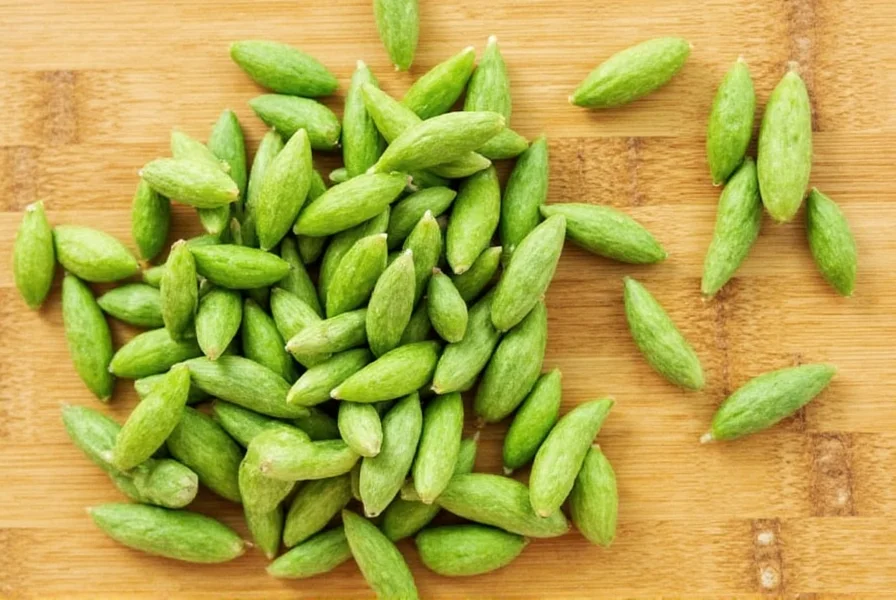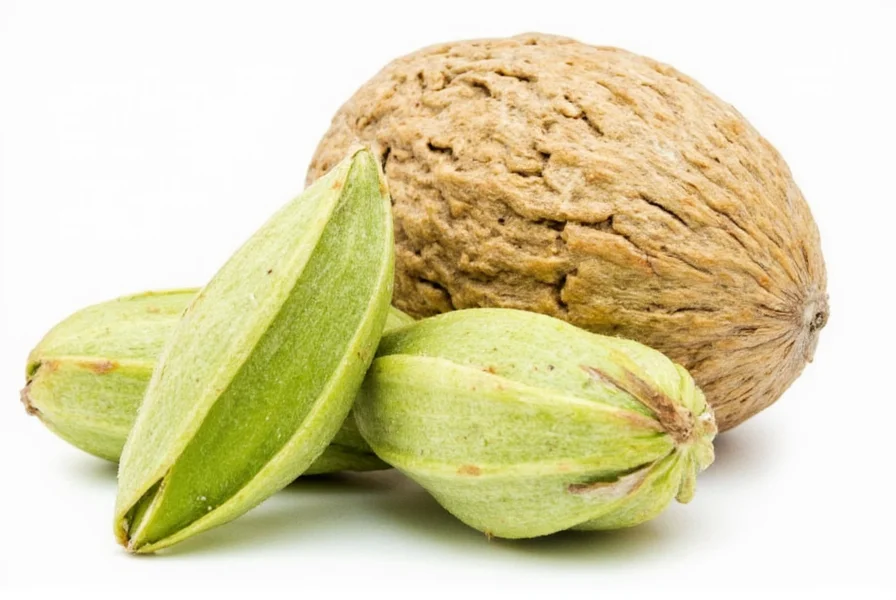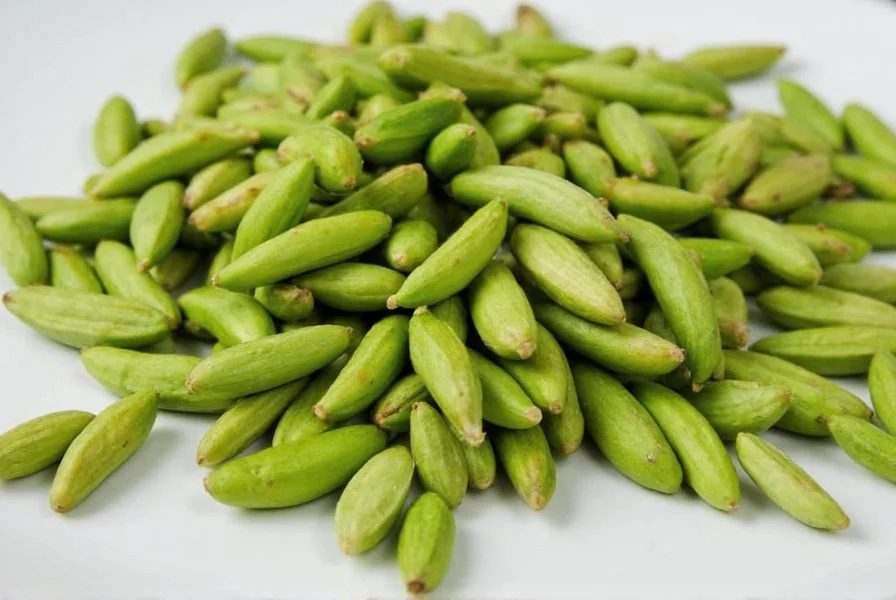When exploring what cardamom is, it's essential to understand this versatile spice isn't a single entity but comes in distinct varieties with unique characteristics. The two primary types—green and black cardamom—serve different culinary purposes despite sharing the same botanical family. Green cardamom (Elettaria cardamomum) grows in shady tropical forests, primarily in India, Guatemala, and Tanzania, while black cardamom (Amomum subulatum) thrives in the Himalayan foothills of Nepal, Bhutan, and India's eastern states.

Types of Cardamom and Their Characteristics
Understanding the different types of cardamom helps cooks select the right variety for specific recipes. The flavor profiles vary significantly between types, making substitution challenging without adjusting quantities or expectations.
| Type | Appearance | Flavor Profile | Primary Uses |
|---|---|---|---|
| Green Cardamom | Small, triangular green pods (5-10mm) | Sweet, floral, citrusy with eucalyptus notes | Baking, chai, rice dishes, Scandinavian pastries |
| Black Cardamom | Larger, dark brown/black pods (20-30mm) | Smoky, camphorous, menthol-like | Indian curries, meat dishes, Chinese five-spice |
| Cardamom Seeds | Small black seeds inside pods | More intense, slightly bitter than whole pods | Grinding for spice blends, coffee, Middle Eastern dishes |
Historical Significance and Cultivation
The history of cardamom traces back to ancient India, where it was mentioned in Sumerian texts around 2000 BCE and featured in Ayurvedic medicine. Vikings reportedly introduced cardamom to Scandinavia during their travels, explaining its enduring popularity in Nordic baking traditions. Today, Guatemala produces approximately 70% of the world's green cardamom, while India remains the largest consumer.
Cultivating cardamom requires specific conditions: partial shade, consistent moisture, and temperatures between 14-30°C (57-86°F). The plants take 2-3 years to mature before producing the characteristic pods, which must be harvested by hand when 70-80% ripe to prevent splitting. This labor-intensive process contributes to cardamom's status as the third most expensive spice globally, after saffron and vanilla.
Culinary Applications Around the World
When considering how to use cardamom in cooking, regional variations reveal its remarkable versatility. In Middle Eastern cuisine, ground cardamom enhances Arabic coffee and sweet pastries. Indian kitchens use both green and black varieties—green in desserts and biryanis, black in savory meat dishes. Scandinavian bakers incorporate it into sweet breads like Finnish pulla and Swedish kardemummabullar.
Professional chefs recommend these techniques for using cardamom effectively:
- Whole pods: Add to rice dishes, stews, or chai for subtle flavor infusion (remove before serving)
- Crushed pods: Release more intense flavor in braises or spice blends
- Freshly ground seeds: Ideal for baking where consistent flavor distribution matters
- Cardamom powder: Convenient but loses potency quickly (use within 2 weeks)
Flavor Pairing and Substitution Guidance
Understanding what does cardamom taste like helps create balanced flavor combinations. Its complex profile pairs exceptionally well with citrus (especially orange), cinnamon, cloves, nuts, and dairy. In sweet applications, it complements chocolate, apples, and pears. For savory dishes, it harmonizes with lamb, chicken, lentils, and root vegetables.
When substituting cardamom becomes necessary due to availability or preference, consider these alternatives:
- For green cardamom: Equal parts cinnamon + 1/4 part nutmeg + pinch of coriander
- For black cardamom: Smoked paprika + star anise (use sparingly)
- Universal substitute: Allspice (use 3/4 quantity as it's more potent)
Remember that substitutions never perfectly replicate cardamom's unique flavor, so adjust recipes incrementally when experimenting.
Proper Storage and Freshness Testing
To maintain cardamom shelf life and flavor intensity, proper storage is essential. Whole pods retain freshness significantly longer than pre-ground spice. Store cardamom using these guidelines:
- Whole pods: Airtight container in cool, dark place (up to 1 year)
- Seeds: Refrigerate in glass container (6-8 months)
- Ground cardamom: Freezer in opaque container (3-4 months)
Test freshness by crushing a pod between your fingers—the aroma should be immediately strong and complex. Dull or musty smells indicate diminished quality. For optimal flavor extraction, lightly toast whole pods before grinding, but avoid overheating which can make the spice bitter.
Nutritional Profile and Traditional Medicinal Uses
Beyond its culinary applications, cardamom offers notable health benefits of cardamom recognized in traditional medicine systems. Two teaspoons (4g) of ground cardamom provides approximately:
- 18 calories
- 4g dietary fiber (14% of daily value)
- Significant manganese (21% DV) and magnesium (11% DV)
- Moderate iron (8% DV) and calcium (7% DV)
Traditional Ayurvedic and Chinese medicine have used cardamom for centuries to address digestive issues, respiratory conditions, and oral health. Modern research suggests potential anti-inflammatory and antioxidant properties, though more clinical studies are needed to confirm therapeutic applications. Always consult healthcare professionals before using spices medicinally.

Common Questions About Cardamom
What is the difference between green and black cardamom?
Green cardamom (Elettaria cardamomum) has a sweet, floral flavor ideal for desserts and beverages, while black cardamom (Amomum subulatum) offers a smoky, menthol-like taste better suited for savory dishes. They come from different plant species and cannot be used interchangeably without recipe adjustments.
How can I tell if my cardamom is still fresh?
Fresh cardamom pods should feel heavy for their size, have vibrant color, and release a strong, complex aroma when crushed. If the seeds inside appear dry and grayish rather than black and oily, or if the scent is faint, the cardamom has likely lost potency.
Can I substitute ground cardamom for whole pods?
Yes, but with adjustments. One whole cardamom pod equals approximately 1/8 teaspoon of ground cardamom. Since ground spice loses potency faster, you may need to increase the amount slightly. For best results, grind your own seeds from fresh pods rather than using pre-ground spice.
Why is cardamom so expensive compared to other spices?
Cardamom's high cost stems from labor-intensive cultivation (hand-harvesting required), specific growing conditions, lengthy maturation period (2-3 years before first harvest), and high global demand exceeding supply. It's the third most expensive spice worldwide after saffron and vanilla due to these production challenges.
Frequently Asked Questions
What is the difference between green and black cardamom?
Green cardamom (Elettaria cardamomum) has a sweet, floral flavor ideal for desserts and beverages, while black cardamom (Amomum subulatum) offers a smoky, menthol-like taste better suited for savory dishes. They come from different plant species and cannot be used interchangeably without recipe adjustments.
How can I tell if my cardamom is still fresh?
Fresh cardamom pods should feel heavy for their size, have vibrant color, and release a strong, complex aroma when crushed. If the seeds inside appear dry and grayish rather than black and oily, or if the scent is faint, the cardamom has likely lost potency.
Can I substitute ground cardamom for whole pods?
Yes, but with adjustments. One whole cardamom pod equals approximately 1/8 teaspoon of ground cardamom. Since ground spice loses potency faster, you may need to increase the amount slightly. For best results, grind your own seeds from fresh pods rather than using pre-ground spice.
Why is cardamom so expensive compared to other spices?
Cardamom's high cost stems from labor-intensive cultivation (hand-harvesting required), specific growing conditions, lengthy maturation period (2-3 years before first harvest), and high global demand exceeding supply. It's the third most expensive spice worldwide after saffron and vanilla due to these production challenges.











 浙公网安备
33010002000092号
浙公网安备
33010002000092号 浙B2-20120091-4
浙B2-20120091-4